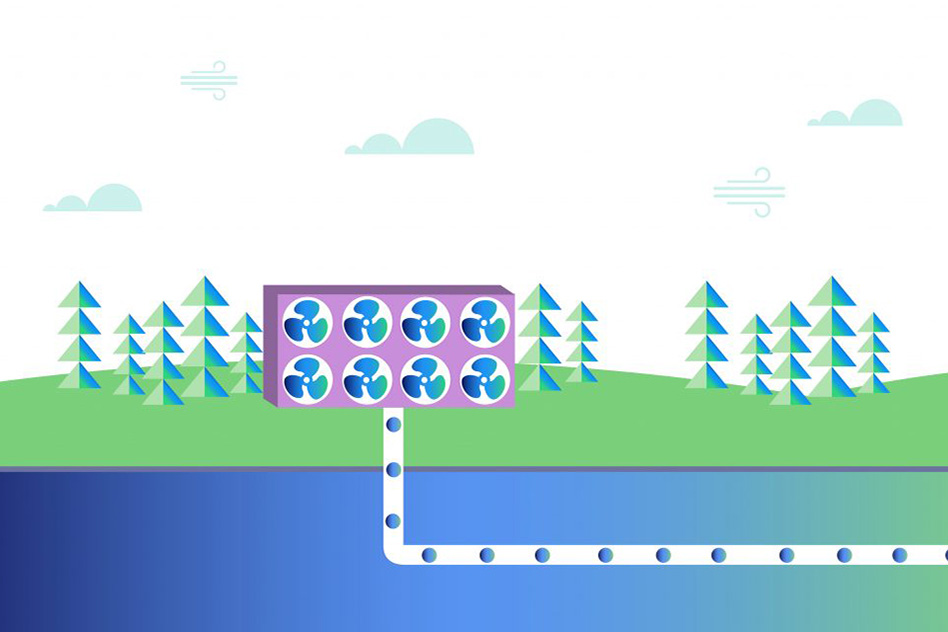
Direct air capture (DAC) technologies extract carbon dioxide (CO2) directly from the atmosphere. DAC and other carbon-removal technologies may play a key role in global and national efforts to achieve net-zero emissions economies in which the amount of CO2 released into the atmosphere is equivalent to that being removed. Carbon removed from the atmosphere in hard-to-decarbonize sectors such as aviation and heavy industry could be utilized to produce synthetic fuels or stored underground. As the technology has not yet been demonstrated at large scales, the future cost of DAC and its potential to support an affordable path to a net-zero economy is uncertain. Capture cost estimates are wide-ranging, from USD $50/ton to $1,000/ton of CO2.
To explore the economic feasibility of large-scale DAC, the MIT Joint Program on the Science and Policy of Global Change and MIT Laboratory for Aviation and the Environment (LAE) convened a seminar entitled “Affordable Direct Air Capture: Myth or Reality?" on the MIT Campus and online on May 26. Moderated by MIT Joint Program Founding Co-Director and Sloan School of Management Professor Emeritus Henry Jacoby, and introduced by LAE Director and MIT Aero/Astro Professor Steven Barrett, the seminar featured presentations by two trailblazers in carbon-removal technology.
MIT Energy Initiative Senior Engineer Howard Herzog, a pioneer in carbon capture research and author of the book Carbon Capture, evaluated the technical, logistical and financial challenges of deploying DAC at scale. Harvard University Professor of Applied Physics David Keith, founder of Carbon Engineering, a company developing technology to capture CO2 from ambient air, offered his perspective on those challenges as well as opportunities for DAC to play a substantial role in advancing net-zero economies.
To frame the discussion, Barrett noted that the latest IPCC Assessment Report indicates that keeping global warming below 1.5 degrees Celsius will likely require the deployment of negative emissions technologies (NETs) that remove and sequester CO2 from the air. DAC could serve as a NET as well as a carbon source for drop-in fuel production in aviation and other hard-to-decarbonize transportation modes.
Herzog observed that it takes a lot of energy (about 1200 kilowatt hours/ton of CO2) to separate CO2 from the large amount of air that a DAC unit must process. Unless that energy comes from zero-carbon sources rather than those that produce emissions that must also be extracted from the air, the operational costs of multiple DAC units could become untenable. But to obtain those carbon-free energy sources, DAC will have to compete with growing ranks of consumers as the clean energy transition escalates.
Herzog highlighted three other affordability concerns. First, it’s challenging to site DAC plants due to constraints on land availability, access to low-carbon energy and other utilities, permitting issues, meteorological conditions, and accessibility of carbon-storage options. Second, the optimal capture fraction (volume of CO2 extracted from a specified volume of ambient air) should be determined from the engineering design process so as to minimize cost and maximize reliability. Finally, at large scale, there are limited opportunities to tap waste heat as thermal energy for DAC operations.
Both presenters speculated on the cost per net ton of DAC-extracted CO2 in 2030, but concurred on the difficulty of coming up with accurate cost estimates, given uncertainties in operational and market conditions. Herzog’s estimate was $600-$1000; Keith’s was $300-425, based on analysis by Oxy, an energy and chemical company that has partnered with Carbon Engineering to deliver its DAC technology on an industrial scale. Keith noted that companies such as Oxy that quote lower prices for DAC base their estimates on what they view as rigorous costing, since they have a vested interest in the technology’s success.
While agreeing with Herzog about the challenges of siting DAC plants and the need to have process-engineering constraints determine the capture fraction of each DAC unit, Keith was bullish about the future and affordability of DAC. He argued that costs could be contained through modular design and economies of scale, using liquid solvents rather than solid materials to extract CO2 from the air, and exploiting the low cost of solar technology.
For more details, watch the video recording.
Image: Direct air capture (Source: Drax)

